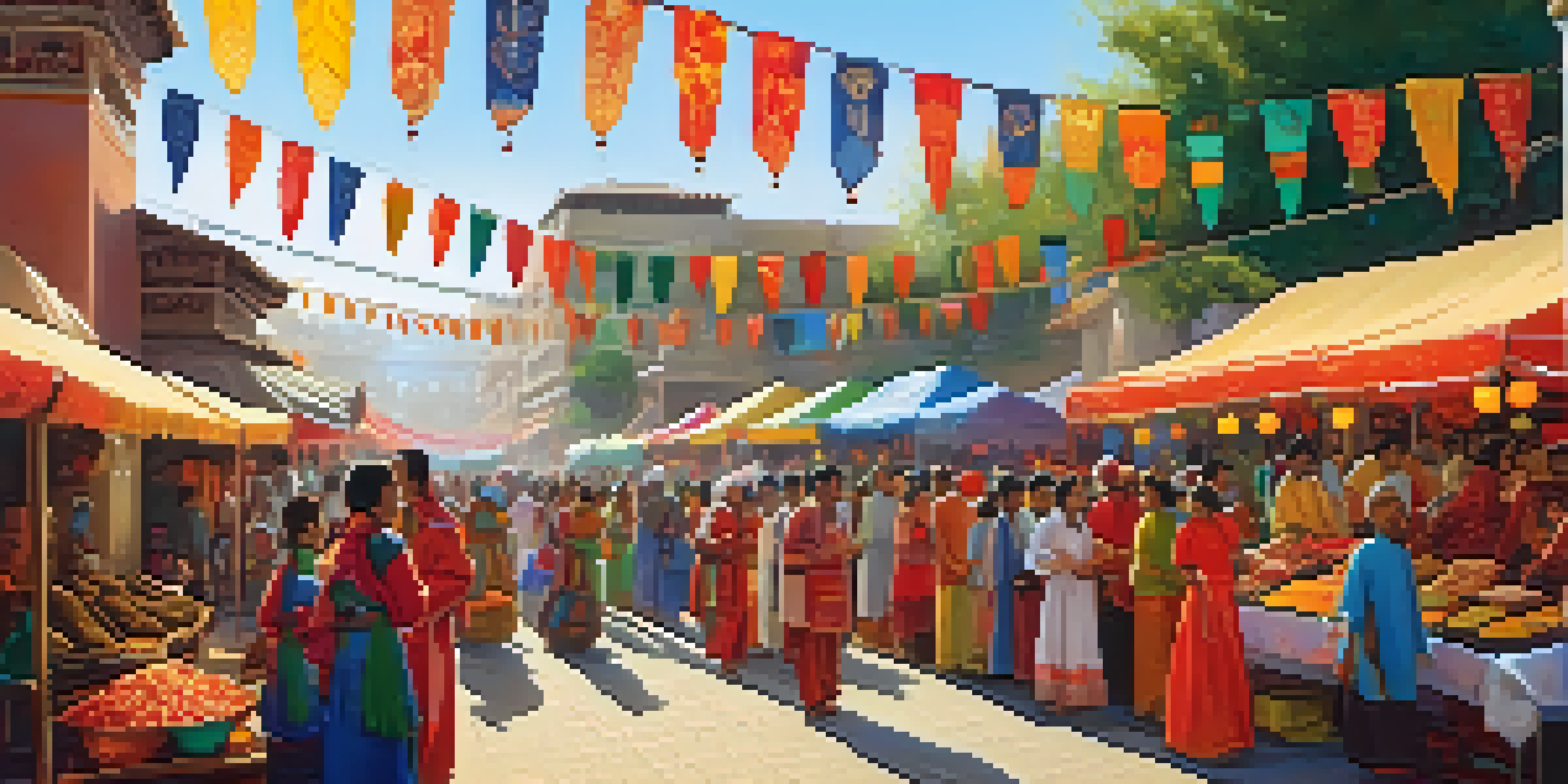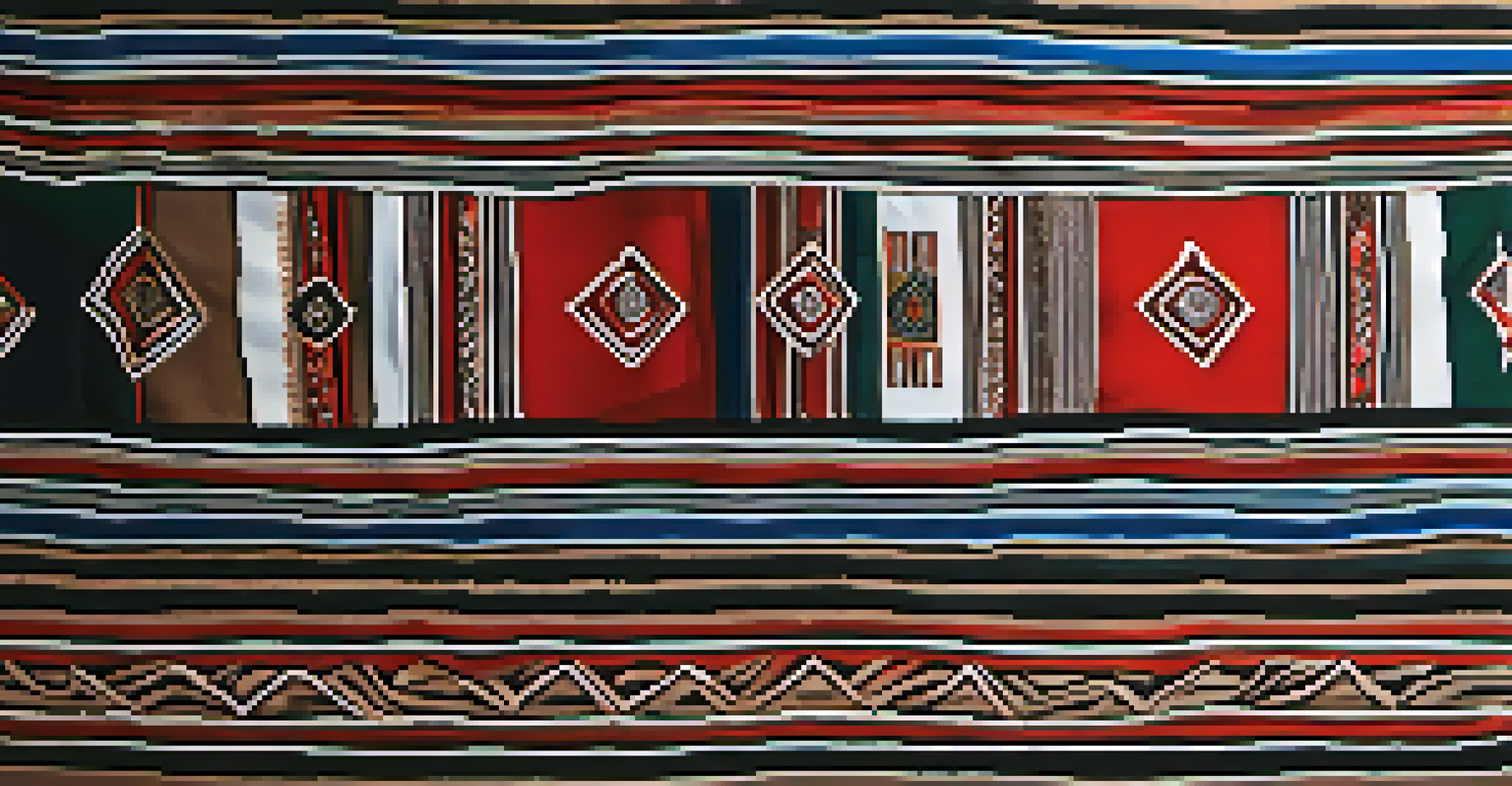The Role of Critics in Cultural Appropriation Discussions

Understanding Cultural Appropriation and Its Implications
Cultural appropriation refers to the adoption of elements from one culture by members of another, often without permission. This can lead to misunderstandings and a lack of respect for the original culture. Critics highlight these nuances, helping to clarify why certain actions can be seen as offensive or exploitative.
Cultural appropriation is often a one-way street, where the dominant culture takes from marginalized communities without giving due credit or respect.
For example, when fashion designers incorporate traditional Indigenous patterns without acknowledgment, it raises questions about respect and ownership. Critics help to contextualize these actions within broader societal issues, such as power dynamics and historical exploitation. By doing so, they create a space for meaningful conversation around cultural exchanges.
Ultimately, understanding cultural appropriation is crucial for fostering respectful interactions between cultures. Critics serve as essential guides in this complex landscape, urging audiences to consider the implications of their choices and encouraging a more thoughtful approach to cultural engagement.
The Role of Critics in Raising Awareness
Critics play a pivotal role in raising awareness about cultural appropriation through their analyses and commentary. They often bring to light examples that may go unnoticed by the general public, sparking discussions about the appropriateness of certain behaviors. By doing so, they educate audiences on the subtleties of cultural sensitivity.

For instance, a film critic might analyze how a movie represents a marginalized culture and the potential repercussions of misrepresentation. This not only informs viewers but also prompts creators to reconsider their portrayals and the impact they may have. Critics, therefore, serve as a bridge between creators and audiences, fostering a deeper understanding of cultural contexts.
Critics Foster Cultural Awareness
Critics play a crucial role in raising awareness about cultural appropriation, educating audiences on cultural sensitivity and sparking important discussions.
Through their critiques, they encourage a culture of reflection and dialogue, urging both individuals and organizations to be more mindful of their cultural interactions. This awareness can lead to more respectful and informed exchanges, benefiting everyone involved.
Critics as Advocates for Marginalized Voices
Many critics actively advocate for the voices of marginalized communities in discussions about cultural appropriation. They highlight the importance of listening to those directly affected by appropriation, ensuring that their perspectives are included in the conversation. This advocacy helps to elevate voices that are often drowned out in mainstream discourse.
To borrow from one culture without permission is to disregard the meaning behind it, often leading to exploitation rather than appreciation.
For example, a music critic may focus on how a particular genre's roots are tied to specific cultural experiences. By emphasizing these connections, critics can challenge the prevailing narratives that often overshadow marginalized artists. This not only honors the original creators but also encourages a richer appreciation of diverse cultural contributions.
In this way, critics become allies to marginalized communities, using their platforms to amplify important discussions. Their efforts help to create a more inclusive dialogue around cultural appropriation, fostering understanding and respect across cultural lines.
The Balance Between Critique and Celebration
Critics often navigate the delicate balance between celebrating cultural exchange and critiquing appropriation. They recognize that cultural influences can enrich creative expressions while also being mindful of the potential for exploitation. This nuanced understanding is vital in discussions about cultural appropriation.
For example, a restaurant critic may celebrate a fusion cuisine that blends two cultures while acknowledging the origins of the dishes. By doing so, they honor the culinary traditions while highlighting the importance of respecting those traditions. This balanced approach encourages a more profound appreciation for cultural diversity.
Advocacy for Marginalized Voices
Many critics advocate for marginalized communities, ensuring their perspectives are included in cultural appropriation discussions and elevating often-overlooked voices.
Critics play a crucial role in helping audiences understand that it is possible to celebrate cultural exchange without crossing into appropriation. Their insights foster conversations that promote respect and understanding, ultimately enriching the cultural landscape.
How Critics Shape Industry Standards and Practices
Critics have the power to shape industry standards and practices surrounding cultural representation. Their reviews and analyses can influence public perception and, consequently, the direction that creators take in their work. By holding artists and brands accountable, critics help to establish expectations for respectful cultural engagement.
For instance, a fashion critic may call out a brand for appropriating cultural motifs without proper acknowledgment. This public critique can lead to a backlash, prompting the brand to reconsider its practices and approach to cultural representation. Critics thus serve as watchdogs in the creative landscape, urging industries to adopt more ethical practices.
As critics continue to challenge and elevate discussions around cultural appropriation, they help to create a landscape where cultural sensitivity is prioritized. This shift not only benefits marginalized communities but also enriches the creative industries as a whole.
The Impact of Social Media on Critics' Roles
Social media has transformed the way critics engage with cultural appropriation discussions. Platforms like Twitter and Instagram allow critics to share their insights instantly, reaching wider audiences and sparking real-time conversations. This immediacy can amplify the impact of their critiques significantly.
For example, a viral tweet from a critic can bring attention to an appropriative act, prompting discussions that might not have occurred otherwise. This democratization of criticism allows more voices to weigh in on cultural issues, creating a richer tapestry of perspectives. Critics can now engage with their audiences directly, fostering a sense of community around shared values.
Navigating Critique and Celebration
Critics balance celebrating cultural exchange with critiquing appropriation, promoting respect for cultural origins while appreciating diversity.
While social media can sometimes lead to hasty conclusions, it also provides a platform for nuanced discussions. Critics must navigate this landscape carefully, using their expertise to guide conversations and encourage thoughtful engagement with cultural appropriation.
The Future of Criticism in Cultural Appropriation Dialogue
As discussions around cultural appropriation continue to evolve, the role of critics will also adapt. They will need to remain vigilant, ensuring that their critiques are informed, respectful, and inclusive. This ongoing evolution will be essential in fostering a culture of understanding and respect among diverse communities.
For instance, critics might increasingly focus on the intersectionality of cultural appropriation, examining how race, class, and gender intersect in these discussions. This broader perspective can enrich the dialogue and provide deeper insights into the complexities of cultural exchange. Critics will play a vital role in shaping these conversations, pushing for more comprehensive analyses.

Ultimately, the future of criticism in cultural appropriation discussions hinges on a commitment to ongoing learning and growth. By remaining open to new perspectives and engaging with marginalized voices, critics can continue to be pivotal players in shaping a more respectful cultural landscape.